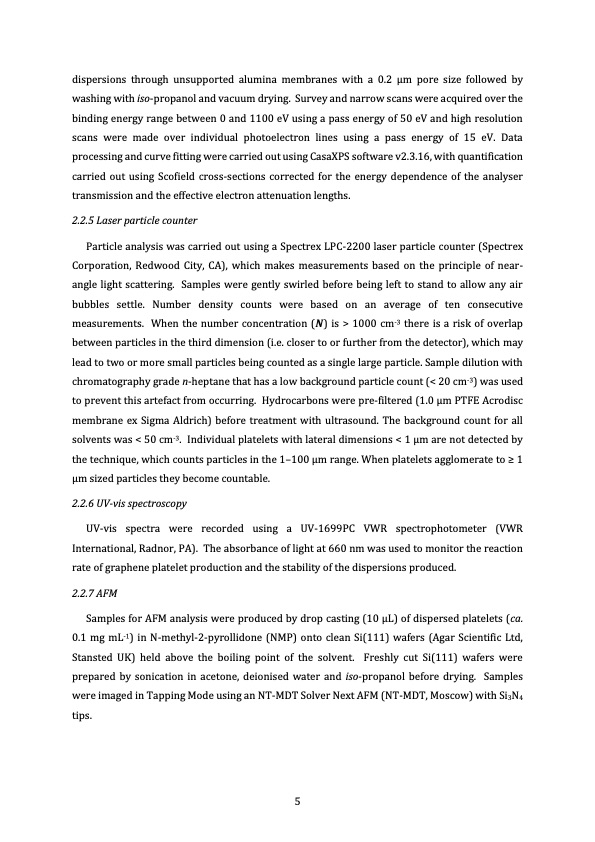PDF Publication Title:
Text from PDF Page: 006
dispersions through unsupported alumina membranes with a 0.2 μm pore size followed by washing with iso-propanol and vacuum drying. Survey and narrow scans were acquired over the binding energy range between 0 and 1100 eV using a pass energy of 50 eV and high resolution scans were made over individual photoelectron lines using a pass energy of 15 eV. Data processing and curve fitting were carried out using CasaXPS software v2.3.16, with quantification carried out using Scofield cross-sections corrected for the energy dependence of the analyser transmission and the effective electron attenuation lengths. 2.2.5 Laser particle counter Particle analysis was carried out using a Spectrex LPC-2200 laser particle counter (Spectrex Corporation, Redwood City, CA), which makes measurements based on the principle of near- angle light scattering. Samples were gently swirled before being left to stand to allow any air bubbles settle. Number density counts were based on an average of ten consecutive measurements. When the number concentration (𝑵) is > 1000 cm-3 there is a risk of overlap between particles in the third dimension (i.e. closer to or further from the detector), which may lead to two or more small particles being counted as a single large particle. Sample dilution with chromatography grade n-heptane that has a low background particle count (< 20 cm-3) was used to prevent this artefact from occurring. Hydrocarbons were pre-filtered (1.0 μm PTFE Acrodisc membrane ex Sigma Aldrich) before treatment with ultrasound. The background count for all solvents was < 50 cm-3. Individual platelets with lateral dimensions < 1 μm are not detected by the technique, which counts particles in the 1–100 μm range. When platelets agglomerate to ≥ 1 μm sized particles they become countable. 2.2.6 UV-vis spectroscopy UV-vis spectra were recorded using a UV-1699PC VWR spectrophotometer (VWR International, Radnor, PA). The absorbance of light at 660 nm was used to monitor the reaction rate of graphene platelet production and the stability of the dispersions produced. 2.2.7 AFM Samples for AFM analysis were produced by drop casting (10 μL) of dispersed platelets (ca. 0.1 mg mL-1) in N-methyl-2-pyrollidone (NMP) onto clean Si(111) wafers (Agar Scientific Ltd, Stansted UK) held above the boiling point of the solvent. Freshly cut Si(111) wafers were prepared by sonication in acetone, deionised water and iso-propanol before drying. Samples were imaged in Tapping Mode using an NT-MDT Solver Next AFM (NT-MDT, Moscow) with Si3N4 tips. 5PDF Image | graphene platelets with partial oxidation via cavitation

PDF Search Title:
graphene platelets with partial oxidation via cavitationOriginal File Name Searched:
Sonochemistry-Chester-Rep.pdfDIY PDF Search: Google It | Yahoo | Bing
Salgenx Redox Flow Battery Technology: Power up your energy storage game with Salgenx Salt Water Battery. With its advanced technology, the flow battery provides reliable, scalable, and sustainable energy storage for utility-scale projects. Upgrade to a Salgenx flow battery today and take control of your energy future.
CONTACT TEL: 608-238-6001 Email: greg@infinityturbine.com (Standard Web Page)